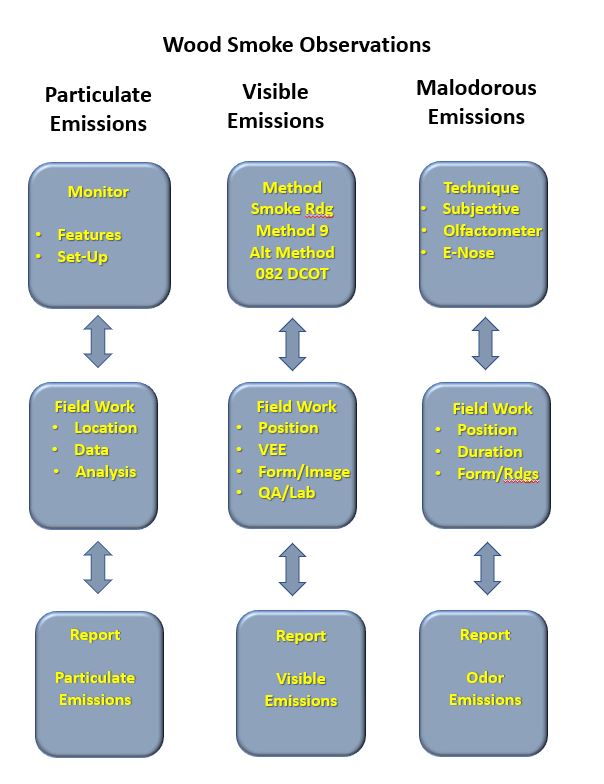Wood Smoke Air Pollution Observations
An Overview
To determine compliance to wood smoke related laws and regulations one can identify by observation the level of certain wood smoke emissions from open burning, indoor appliances, or outdoor wood boilers. This page addresses specifically Particulate Matter Emissions (PM2.5), Visible Emissions, and Malodorous Emissions. For each category of emissions there are three activities that one may consider as common to the observational process:
Choice of Device, Method/Technique – Dependent on the type of emissions and applicable rules, one uses different devices and methods to either objectively or subjectively measure emissions. To objectively measure emissions, you must set-up, place, initiate, time and maintain the device e.g., a laser monitor to measure particulate matter (PM2.5), an approved digital camera (with a certified user and software as a service subscription) to measure wood smoke opacity or a field olfactometer (with a certified user and formal checklist) to measure odor.
Field Work -. This can entail the essential work in the field and elsewhere such as data collection and checking/analysis as to the findings for particulate emissions, visibility or opacity and odor or malodorous matter.
The Report–Finally, one must write up the results of the observations in a form suitable for evidence as to the complaint. For example, in the case of particulate pollution one could do the following: import the (PM2.5) readings to a spreadsheet, graph the data, contrast the data to comparable (unpolluted) ambient readings and, finally, compare the recorded PM2.5 levels to related health effects at those levels as per the AQI PM2.5 (see the Wood Smoke Health Effects page under the Basics tab) and to the 24-hour standard for PM2.5.
The diagram below illustrates these key aspects of observation of wood smoke emissions. Click the desired topic in the drop-down menu under the Observations tab for specific guidance as to observation of: particulate matter (PM2.5) emissions, visible emissions. and odor/malodorous matter emissions.


